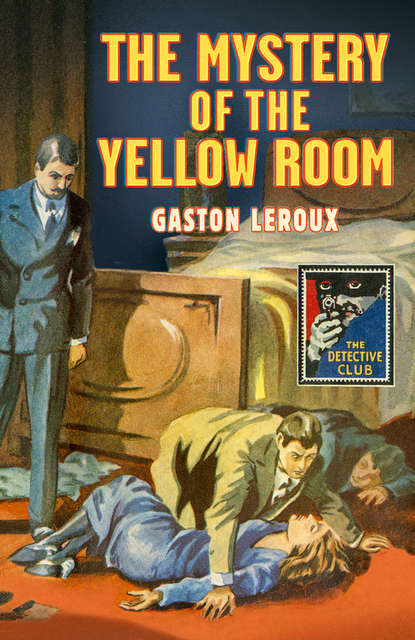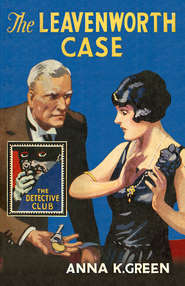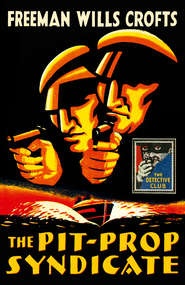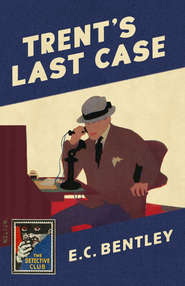По всем вопросам обращайтесь на: info@litportal.ru
(©) 2003-2024.
✖
The Mystery of the Yellow Room
Автор
Год написания книги
2019
Настройки чтения
Размер шрифта
Высота строк
Поля
After a short silence he added:
‘Ah—if Mademoiselle Stangerson were only well enough today to be questioned!’
Rouletabille following up his thought, asked:
‘And the attic? There must be some opening to that?’
‘Yes; there is a window, or rather skylight, in it, which, as it looks out towards the country, Monsieur Stangerson has had barred, like the rest of the windows. These bars, as in the other windows, have remained intact, and the blinds, which naturally open inwards, have not been unfastened. For the rest, we have not discovered anything to lead us to suspect that the murderer had passed through the attic.’
‘It seems clear to you, then, Monsieur, that the murderer escaped—nobody knows how—by the window in the vestibule?’
‘Everything goes to prove it.’
‘I think so, too,’ confessed Rouletabille gravely.
After a brief silence, he continued:
‘If you have not found any traces of the murderer in the attic, such as the dirty footmarks similar to those on the floor of the Yellow Room, you must come to the conclusion that it was not he who stole Daddy Jacques’s revolver.’
‘There are no footmarks in the attic other than those of Daddy Jacques himself,’ said the magistrate with a significant turn of his head. Then, after an apparent decision, he added: ‘Daddy Jacques was with Monsieur Stangerson in the laboratory—and it was lucky for him he was.’
‘Then what part did his revolver play in the tragedy? It seems very clear that this weapon did less harm to Mademoiselle Stangerson than it did to the murderer.’
The magistrate made no reply to this question, which doubtless embarrassed him. ‘Monsieur Stangerson,’ he said, ‘tells us that the two bullets have been found in the Yellow Room, one embedded in the wall stained with the impression of a red hand—a man’s large hand—and the other in the ceiling.’
‘Oh! Oh! In the ceiling!’ muttered Rouletabille. ‘In the ceiling! That’s very curious! In the ceiling!’
He puffed awhile in silence at his pipe, enveloping himself in the smoke. When we reached Savigny-sur-Orge, I had to tap him on the shoulder to arouse him from his dream and come out on to the platform of the station.
There, the magistrate and his Registrar bowed to us, and by rapidly getting into a cab that was awaiting them, made us understand that they had seen enough of us.
‘How long will it take to walk to the Château du Glandier?’ Rouletabille asked one of the railway porters.
‘An hour and a half or an hour and three quarters—easy walking,’ the man replied.
Rouletabille looked up at the sky and, no doubt, finding its appearance satisfactory, took my arm and said:
‘Come on! I need a walk.’
‘Are things getting less entangled?’ I asked.
‘Not a bit of it!’ he said, ‘more entangled than ever! It’s true, I have an idea—’
‘What’s that?’ I asked.
‘I can’t tell you what it is just at present—it’s an idea involving the life or death of two persons at least.’
‘Do you think there were accomplices?’
‘I don’t think it—’
We fell into silence. Presently he went on:
‘It was a bit of luck, our falling in with that examining magistrate and his Registrar, eh? What did I tell you about that revolver?’ His head was bent down, he had his hands in his pockets, and he was whistling. After a while I heard him murmur:
‘Poor woman!’
‘Is it Mademoiselle Stangerson you are pitying?’
‘Yes; she’s a noble woman and worthy of being pitied! A woman of a great, a very great character—I imagine—I imagine.’
‘You know her then?’
‘Not at all. I have never seen her.’
‘Why, then, do you say that she is a woman of great character?’
‘Because she bravely faced the murderer; because she courageously defended herself—and, above all, because of the bullet in the ceiling.’
I looked at Rouletabille and inwardly wondered whether he was not mocking me, or whether he had not suddenly gone out of his senses. But I saw that he had never been less inclined to laugh, and the brightness of his keenly intelligent eyes assured me that he retained all his reason. Then, too, I was used to his broken way of talking, which only left me puzzled as to his meaning, till, with a very few clear, rapidly uttered words, he would make the drift of his ideas clear to me, and I saw that what he had previously said, and which had appeared to me void of meaning, was so thoroughly logical that I could not understand how it was I had not understood him sooner.
CHAPTER IV (#ulink_25116e5c-ab1e-5495-8f1e-018144e061a7)
‘IN THE BOSOM OF WILD NATURE’ (#ulink_25116e5c-ab1e-5495-8f1e-018144e061a7)
THE Château du Glandier is one of the oldest châteaux in the Ile de France, where so many building remains of the feudal period are still standing. Built originally in the heart of the forest, in the reign of Philip le Bel, it now could be seen a few hundred yards from the road leading from the village of Sainte-Geneviève to Monthery. A mass of inharmonious structures, it is dominated by a donjon. When the visitor has mounted the crumbling steps of this ancient donjon, he reaches a little plateau where, in the seventeenth century, Georges Philibert de Sequigny, Lord of the Glandier, Maisons-Neuves and other places, built the existing town in an abominably rococo style of architecture.
It was in this place, seemingly belonging entirely to the past, that Professor Stangerson and his daughter installed themselves to lay the foundations for the science of the future. Its solitude, in the depths of woods, was what, more than all, had pleased them. They would have none to witness their labours and intrude on their hopes, but the aged stones and grand old oaks. The Glandier—ancient Glandierum—was so called from the quantity of glands (acorns) which, in all times, had been gathered in that neighbourhood. This land, of present mournful interest, had fallen back, owing to the negligence or abandonment of its owners, into the wild character of primitive nature. The buildings alone, which were hidden there, had preserved traces of their strange metamorphoses. Every age had left on them its imprint; a bit of architecture with which was bound up the remembrance of some terrible event, some bloody adventure. Such was the château in which science had taken refuge—a place seemingly designed to be the theatre of mysteries, terror, and death.
Having explained so far, I cannot refrain from making one further reflection. If I have lingered a little over this description of the Glandier, it is not because I have reached the right moment for creating the necessary atmosphere for the unfolding of the tragedy before the eyes of the reader. Indeed, in all this matter, my first care will be to be as simple as is possible. I have no ambition to be an author. An author is always something of a romancer, and God knows, the mystery of the Yellow Room is quite full enough of real tragic horror to require no aid from literary effects. I am, and only desire to be, a faithful ‘reporter’. My duty is to report the event; and I place the event in its frame—that is all. It is only natural that you should know where the things happened.
I return to Monsieur Stangerson. When he bought the estate, fifteen years before the tragedy with which we are engaged occurred, the Château du Glandier had for a long time been unoccupied. Another old château in the neighbourhood, built in the fourteenth century by Jean de Belmont, was also abandoned, so that that part of the country was very little inhabited. Some small houses on the side of the road leading to Corbeil, an inn, called the ‘Auberge du Donjon’, which offered passing hospitality to wagoners; these were about all to represent civilization in this out-of-the-way part of the country, but a few leagues from the capital.
But this deserted condition of the place had been the determining reason for the choice made by Monsieur Stangerson and his daughter. Monsieur Stangerson was already celebrated. He had returned from America, where his works had made a great stir. The book which he had published at Philadelphia, on the Dissociation of Matter by Electric Action, had aroused opposition throughout the whole scientific world. Monsieur Stangerson was a Frenchman, but of American origin. Important matters relating to a legacy had kept him for several years in the United States, where he had continued the work begun by him in France, whither he had returned in possession of a large fortune. This fortune was a great boon to him; for, though he might have made millions of dollars by exploiting two or three of his chemical discoveries relative to new processes of dyeing, it was always repugnant to him to use for his own private gain the wonderful gift of invention he had received from nature. He considered he owed it to mankind, and all that his genius brought into the world went, by this philosophical view of his duty, into the public lap.
If he did not try to conceal his satisfaction at coming into possession of this fortune, which enabled him to give himself up to his passion for pure science, he had equally to rejoice, it seemed to him, for another cause. Mademoiselle Stangerson was, at the time when her father returned from America and bought the Glandier estate, twenty years of age. She was exceedingly pretty, having at once the Parisian grace of her mother, who had died in giving her birth, and all the splendour, all the riches of the young American blood of her parental grandfather, William Stangerson. A citizen of Philadelphia, William Stangerson had been obliged to become naturalized in obedience to family exigencies at the time of his marriage with a French lady, she who was to be the mother of the illustrious Stangerson. In that way the professor’s French nationality is accounted for.
Twenty years of age, a charming blonde, with blue eyes, milk-white complexion, and radiant with divine health, Mathilde Stangerson was one of the most beautiful marriageable girls in either the old or the new world. It was her father’s duty, in spite of the inevitable pain which a separation from her would cause him, to think of her marriage; and he was fully prepared for it. Nevertheless, he buried himself and his child at the Glandier at the moment when his friends were expecting him to bring her out into society. Some of them expressed their astonishment, and to their questions he answered: ‘It is my daughter’s wish. I can refuse her nothing. She has chosen the Glandier.’
Interrogated in her turn, the young girl replied calmly: ‘Where could we work better than in this solitude?’ For Mademoiselle Stangerson had already begun to collaborate with her father in his work. It could not at the time be imagined that her passion for science would lead her so far as to refuse all the suitors who presented themselves to her for over fifteen years. So secluded was the life led by the two, father and daughter, that they showed themselves only at a few official receptions and, at certain times in the year, in two or three friendly drawing-rooms, where the fame of the professor and the beauty of Mathilde made a sensation. The young girl’s extreme reserve did not at first discourage suitors; but at the end of a few years, they tired of their quest.
One alone persisted with tender tenacity and deserved the name of ‘eternal fiancé’, a name he accepted with melancholy resignation; that was Monsieur Robert Darzac. Mademoiselle Stangerson was now no longer young, and it seemed that, having found no reason for marrying at five-and-thirty, she would never find one. But such an argument evidently found no acceptance with Monsieur Robert Darzac. He continued to pay his court—if the delicate and tender attention with which he ceaselessly surrounded this woman of five-and-thirty could be called courtship—in face of her declared intention never to marry.
Suddenly, some weeks before the events with which we are occupied, a report—to which nobody attached any importance, so incredible did it sound—was spread about Paris, that Mademoiselle Stangerson had at last consented to ‘crown’ the inextinguishable flame of Monsieur Robert Darzac! It needed that Monsieur Robert Darzac himself should not deny this matrimonial rumour to give it an appearance of truth, so unlikely did it seem to be well founded. One day, however, Monsieur Stangerson, as he was leaving the Academy of Science, announced that the marriage of his daughter and Monsieur Robert Darzac would be celebrated in the privacy of the Château du Glandier, as soon as he and his daughter had put the finishing touches to their report summing up their labours on the Dissociation of Matter. The new household would install itself in the Glandier, and the son-in-law would lend his assistance in the work to which the father and daughter had dedicated their lives.
The scientific world had barely had time to recover from the effect of this news, when it learned of the attempted assassination of Mademoiselle under the extraordinary conditions which we have detailed and which our visit to the château was to enable us to ascertain with yet greater precision. I have not hesitated to furnish the reader with all these retrospective details, known to me through my business relations with Monsieur Robert Darzac. On crossing the threshold of the Yellow Room he was as well posted as I was.
CHAPTER V (#ulink_8182cdf1-189a-53e6-93ee-adf6d8e76cbb)










